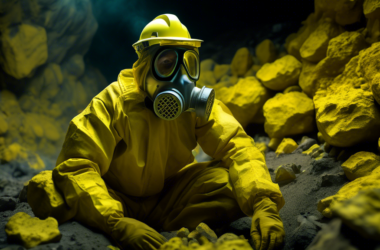The sheep-herding tradition on the Navajo reservation faces an uncertain future due to the looming threat of uranium contamination. As the last remaining sheep-herding family in Cameron, Navajo sisters Denise Rosales and Lori Curley keep their ancestors’ legacy alive by shearing their flock of Navajo-Churro sheep every Mother’s Day weekend.
However, the land surrounding their home is littered with abandoned uranium mines, posing a significant health risk to the sheep. The sheep, in turn, are a staple of the Diné diet and hold cultural significance for the Navajo people. But with the potential for uranium bioaccumulation in the sheep, the safety of consuming mutton has become a pressing concern.
Research conducted by Northern Arizona University has shown alarming levels of uranium in the kidneys of sheep in Cameron, far exceeding safe levels established by the Environmental Protection Agency. With limited federal regulation on the safety of consuming uranium-contaminated meat, the future of mutton consumption on the Navajo reservation remains uncertain.
Despite these challenges, researchers and community members are determined to find solutions to protect this centuries-old tradition. Through further studies on uranium levels in sheep and the impacts of mutton consumption, the hope is to preserve the cultural and culinary heritage of the Navajo people while safeguarding public health.










